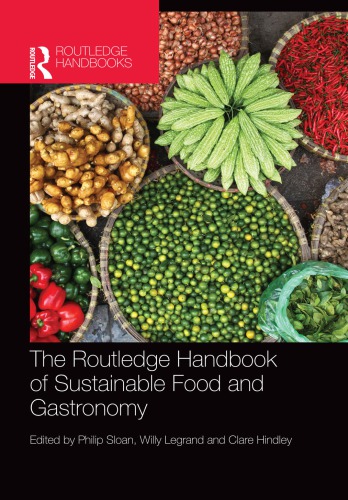

Most ebook files are in PDF format, so you can easily read them using various software such as Foxit Reader or directly on the Google Chrome browser.
Some ebook files are released by publishers in other formats such as .awz, .mobi, .epub, .fb2, etc. You may need to install specific software to read these formats on mobile/PC, such as Calibre.
Please read the tutorial at this link. https://ebooknice.com/page/post?id=faq
We offer FREE conversion to the popular formats you request; however, this may take some time. Therefore, right after payment, please email us, and we will try to provide the service as quickly as possible.
For some exceptional file formats or broken links (if any), please refrain from opening any disputes. Instead, email us first, and we will try to assist within a maximum of 6 hours.
EbookNice Team

Status:
Available4.5
19 reviews
ISBN 10: 3053073153
ISBN 13: 9783053073153
Author: Philip Sloan, Willy Legrand, Clare Hindley
The issues surrounding the provision, preparation and development of food products is fundamental to every human being on the planet. Given the scarcity of agricultural land, environmental pollution, climate change and the exponential growth of the world’s population where starvation and obesity are both widespread it is little wonder that exploring the frontiers of food is now a major focus for researchers and practitioners. This timely Handbook provides a systematic guide to the current state of knowledge on sustainable food. It begins by analyzing the historical development surrounding food production and consumption, then moves on to discuss the current food crisis and challenges as well as the impacts linked to modern agriculture and food security. Finally, it concludes with a section that examines emerging sustainable food trends and movements in addition to an analysis of current food science innovations. Developed from specifically commissioned original contributions the Handbook’s inherent multidisciplinary approach paves the way for deeper understanding of all aspects linked to the evolution of food in society, including insights into local food, food and tourism, organic food, indigenous and traditional food, sustainable restaurant practices, consumption patterns and sourcing. This book is essential reading for students, researches and academics interested in the possibilities of sustainable forms of gastronomy and gastronomy’s contribution to sustainable development. The title includes a foreword written by Roberto Flore, Head Chef at the Nordic Food Lab, Copenhagen, Denmark.
Part 1 Anthropology of food
1 “Luxurious simplicity”: self- sufficient food production in Italian ecovillages
2 Spirituality, social identity, and sustainability
3 ‘Sustainable food’: whose responsibility is it anyway? A personal commentary
4 Food for thought: culinary heritage, nostalgia, and food history
Part 2 Local food initiatives
5 Does the pursuit of local food destroy our environment? Questions of authenticity and sustainability
6 Back to the roots – when hip meets sustainable: a case study of the Kartoffelkombinat in Munich
7 Nutrition in rural India
8 Aboriginal food: traditional dishes surviving in the fast food era
9 Sustaining and spreading local food culture through cooking classes: a case study of Chiang Mai, Thailand
10 The use of local culture and sustainability in local food and beverage entrepreneurship: case studies in Cornwall
Part 3 Food movements
11 Vegetarianism for public health and for the environment: major F&B implications
12 Reducing the food miles: locavorism and seasonal eating
13 Spa cuisine: an opportunity for the hospitality industry?
14 Discussions on Slow Food and San Francisco
Part 4 Social pillar/social entrepreneurship
15 Ethical employment in the catering industry
16 The Peruvian cacao value chain’s success: fostering sustainable entrepreneurship, innovation, and social inclusion
17 An analysis of the potential restaurant operations have for rehabilitating offenders: a case study of Her Majesty’s Prison, The Verne
Part 5 Food innovation/future
18 Broadening insect gastronomy
19 Wild ideas in food
20 Foods from aquaculture: varied and growing
21 Fermentation art and science at the Nordic Food Lab
Part 6 A sustainable restaurant system
22 Sustainable restaurant concepts, focus on F&B
23 Foodservice, health and nutrition: responsibility, strategies and perspectives
24 Sustainable supply chains and environmental and ethical initiatives in restaurants
25 How self sufficient can a restaurant be? Introducing the Foodzone model, a managerial tool
26 Business model development for a sustainable and responsible restaurant concept: the dimensions and business rationales of CSR and sustain ability
27 The sustainable restaurant: does it exist?
Part 7 Culinary tourism
28 Local foods: marketing and the destination
29 Authenticity and experience in sustainable food tourism
30 The autumn-pear: a symbol for local identity, local specialities, biodiversity and collaborative park management, an Austrian case study
31 Tourism, food traditions and supporting communities in Samoa: the Mea’ai Project
32 Foodways of lowland Sariaya: towards a sustainable food tourism
33 Gastronomic tourism: development, sustainability and applications – a case study of County Cork, Republic of Ireland
34 Responsible travel as a means to preserve cultural and natural heritage: initiatives in Crete, Greece
Part 8 General issues/world food crisis
35 International and national regulations in favour of sustainable operations in food service
36 The political and economic realities of food system sustain ability
37 Customer expectations regarding organic and healthy food
Index
the routledge handbook of sustainable food and gastronomy
the routledge handbook of sustainable food and gastronomy pdf
books on sustainable food systems
routledge handbook of food ethics
routledge handbook of sustainable and regenerative food systems
the routledge history of american foodways
Tags: Philip Sloan, Willy Legrand, Clare Hindley, Routledge, Sustainable